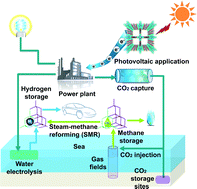Porous covalent–organic materials: synthesis, clean energy application and design
Abstract
Porous covalent–organic materials (COMs) are a fascinating class of nanoporous material with high surface area and diverse pore dimensions, topologies and chemical functionalities. These materials have attracted ever-increasing attention from different field scientists, owing to their potential applications in gas storage, adsorptive separation and photovoltaic devices. The versatile networks are constructed from covalent bonds (B–O, C–C, C–H, C–N, etc.) between the organic linkers by homo- or hetero-polymerizations. To design and synthesize novel porous COMs, we first summarize their synthesis methods, mainly including five kinds of


 Please wait while we load your content...
Please wait while we load your content...